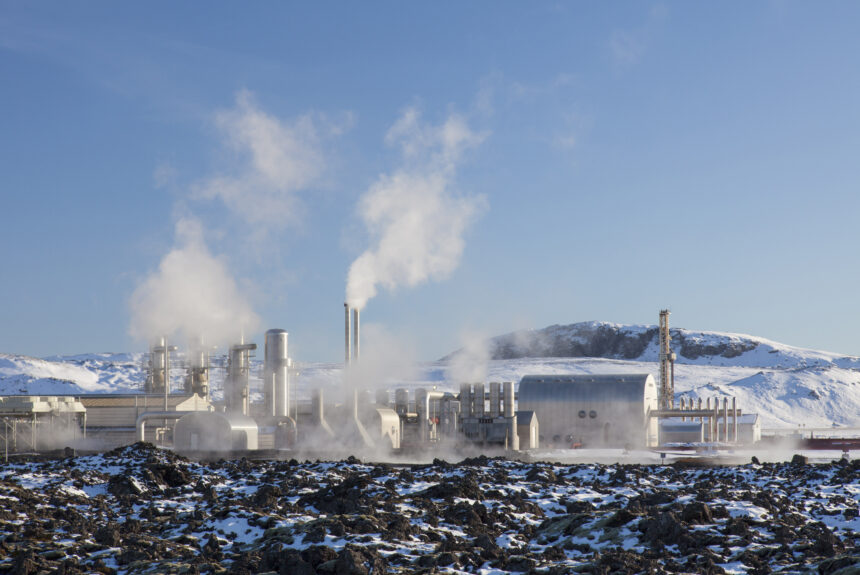Climate change and the energy crisis have resulted in greater attention being paid to an often-overlooked energy source – geothermal heat. Well known in places like Iceland, where it is used extensively for heating both homes and water for bathing, as well as generating electricity, this energy source utilises heat from the earth, generating carbon-free and reliable power that could be important to reducing global energy-sector emissions. Given its potential, innovators from around the world are focusing on expanding geothermal energy.
>>>READ: AltaRock Energy Wants to Power the World Through Geothermal Energy
In France, ENGIE Solutions has created the first power station to be powered by marine geothermal energy. It successfully utilises the temperature difference between warm surface water and the cold water of the seabed via heat exchangers and pumps to supply over 540,000 buildings with winter heating and summer air conditioning. Most recently it has signed a deal with the Hammerson Group to provide energy for the Terrasses du Port shopping mall which attracts over 10 million visitors each year.
Further north in The Netherlands, a Dutch-led consortium involving companies from France, Germany, Switzerland and The Netherlands is exploring techniques involving targeted steel shot drilling. The Rijswijk Center for Sustainable Geoenergy is currently testing its Canopus system which uses horizontal side track wells and horizontal grids that they believe will make it easier to identify accessible geothermal locations underground.
Headquartered in Calgary, Alberta, Eavor Technologies claims to have developed a system that does not require water use or drilling and produces no brine, solids, or greenhouse gas emissions. Instead of a conventional convection system, Eavor uses a conduction system that acts like a very large radiator. The company’s closed-loop system ensures that the working fluid is constantly circulating, and remains isolated from the surrounding environment while being heated to volcano-like temperatures. Eavor asserts that the system provides regular, consistent, reliable power using a minimal surface footprint since the drills and power plants can fit in an ordinary backyard.
Since 2019, the company has been operating its Eavor Lite system in Rocky Mountain House, Alberta. The flow rate and temperature have remained consistent.
An updated version, known as Eavor Deep, is now being installed in the Southwest United States. Once it is operational, it will be the deepest and hottest directional geothermal well in history. The goal of Eavor Deep is to show that linear, and potentially sublinear, drilling in super-hot, ultra-deep environments can succeed and be cost-effective worldwide.
Equally intent on using revolutionary drilling techniques, is America-based Quaise. The start up is seeking to apply proven technology used in nuclear fusion to produce geothermal heat. Their system basically acts as a heat ray to melt rocks.
>>>READ: The Future of Geothermal Energy
As the company points out, in order to scale up to terawatt provision, “we must drill deeper, hotter and faster than ever before possible.’ As a result, Quaise has developed a radical approach that does not require the installation of complex downhole equipment. Its system uses conventional rotary drilling to reach basement rock, before switching to a gyrotron, which is an electrical vacuum designed to heat plasma to achieve thermonuclear fusion. From there, high-power millimetre waves cut even deeper, reaching 20 km below the earth’s surface, where temperatures are around 500°C (932° F).
The concept is a spinoff from work being done at the Massachusetts Institute of Technology. Paul Woskov, a research engineer in MIT’s Plasma Science and Fusion Center, has been researching the technique for years and is now running a pilot project with the Department of Energy at an abandoned coal power plant in upstate New York. By the end of this year, the team will have vaporised a hole 10 times deeper than before. Quaise is aiming to start harvesting energy from the pilot well by 2026.
The innovations and growth of the geothermal heating sector promise ever-new and cost-effective ways of reducing emissions.
Angela Youngman is a long established freelance journalist and author based in the UK specialising in business, sustainability, travel, tourism, leisure, food & drink.
The views and opinions expressed are those of the author’s and do not necessarily reflect the official policy or position of C3.
